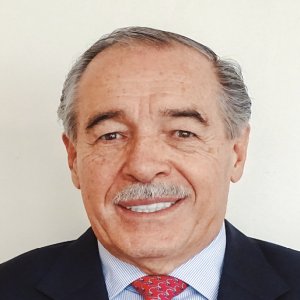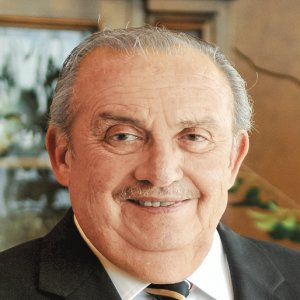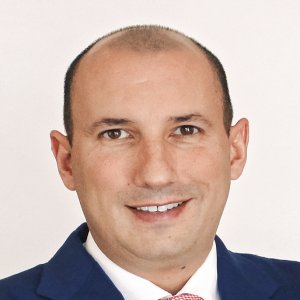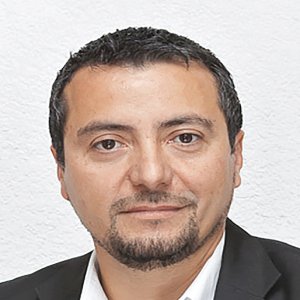Bolstering Supply Chain a Top Priority

Bolstering Supply Chain a Top Priority

STORY INLINE POST
Q: What do you consider to be the role and strengths of the Monterrey Aerocluster?
CR: Nuevo Leon has strong manufacturing capabilities, technical support and qualified human capital. Our goal is to attract foreign aerospace companies into the state to invest and generate the necessary infrastructure. We do this by promoting the state’s numerous infrastructural advantages, including proximity to the border, existing infrastructure, extensive experience with several manufacturing industries and numerous suppliers. The cluster itself is unable to sign contracts with new companies but it can facilitate this process through business-to-business meetings. Alongside the state government and academia, we are creating initiatives to attract aerospace companies to the state. Locating and introducing new companies into the state, either as manufacturers or as commercial offices, is one of our main activities as a cluster. Nuevo Leon has not yet reached its peak in the Mexican aerospace sector. We are slightly behind other clusters in Mexico and growth will come with considerable effort.
PM: What differentiates our cluster is that 95 percent of our companies are Mexican and 80 percent of the products manufactured in Nevo Leon are destined for exportation. Another of our greatest strengths lies in our support companies. HEMAQ provides machine tools and two testing laboratories, Metalinspec Laboratorios and Exova are essential parts of the supply chain. In other regions, when an OEM or a Tier 1 enters the state, companies lower down the supply chain follow it. But in Nuevo Leon these support companies are ready and waiting for OEMs.
Q: How is the cluster encouraging the industry's development?
CR: We must increase the added value of our companies and the best way to do so is by consolidating the supply chain. with Tier 2 and 3 companies. This is a strategy we are implementing alongside the state’s government and, although it will be difficult, achieving it will permit the local aerospace industry to grow tremendously.
We are not targeting OEMs, as there is not enough volume to justify the introduction of one into the state, we must concentrate on the smaller companies in the supply chain. There has been talk of assembling a complete airplane in Mexico but that will not happen until local industry expands. Although we have not had the state’s governmental support that other clusters such as Queretaro, Baja California or Chihuahua have had, Nuevo Leon’s companies have made progress independently and are convinced that the cluster association will help them to accomplish further growth.
PM: Besides the supply chain, the cluster and its academic institutions developed a strategic map for the next five years that aims to strengthen commercial linkage, increase promotion and positioning and generate qualified human resources. The plan will help the standing of four existing sectors, seamless forged rings, assembly, machining and MRO services. So far five local MRO workshops are certified by the FAA, one of which is providing maintenance to United Airlines’ fleet and it previously did the same for American Airlines. In the past we had the vision of becoming the largest aerospace cluster in Latin America but for now we will concentrate on generating a strategic market for these four areas.
Q: What is the cluster proposing to encourage the growth of the local industry?
CR: We must be on the same wavelength as the state’s government to create value that will bring foreign companies to the state. We are aware of the main challenges of the sector, especially financial limitations, and we need the support of the state’s government to develop the aerospace supply chain and to improve quality systems.
PM: The cluster operated four projects with Nuevo Leon’s government to develop local suppliers, train human capital and to help 45 companies acquire certifications. Before the cluster was established, the state government created the Citizen Council for the Aerospace Industry in Nuevo Leon that met every three months from 2003 onward to develop a regional strategy for the sector. The council incorporated representatives from companies, universities, technical schools and the local government and became the Aerospace Cluster of Nuevo Leon in 2009. As the base of our cluster, our advantage over other states is that this council brings much more experience than many of the other cluster associations.
Q: How are you approaching other clusters to promote collaboration and the growth of the sector?
CR: Determining the largest cluster in the country is we must ascertain whether importance depends on companies, employees, revenue, members, sales or production numbers. But clusters are not taking the added value that each company provides to the supply chain into consideration. Aerospace clusters in other countries have a complete supply chain established near each OEM but this is not yet the case for Mexico. OEMs established in Mexico acquire most raw materials, components and services from abroad.
PM: Some experts are discussing the advantages of making Mexico one large cluster, instead of having several clusters in different states. Toward that goal we began a collaborative project with Chihuahua in which we will merge our strengths to balance our deficiencies. Chihuahua does not have the laboratories and services that we have in Nuevo Leon but Chihuahua has more 100 percent aerospace-focused companies in its cluster.
Q: To what extent would you consider it beneficial to fuse this cluster with others near the border?
CR: It is important not to dismiss the strengths and capabilities that each cluster possesses individually. Each cluster should utilize its own strengths to face market challenges.
PM: Coahuila, which is very close to Nuevo Leon, does not have a cluster but its few aerospace companies are incorporated into ours. We do not see much competition between clusters as the aerospace sector is still very young. Now, it is fundamental for the clusters to collaborate to achieve further development and healthy competition.
Q: In what ways do universities collaborate to strengthen human capital in the state?
PM: To cite successful projects, a diploma on composite materials that we designed with the Autonomous University of Nuevo Leon (UANL) has received considerable interest and investment, as composites are of the utmost importance for this industry. UANL also has generated a program alongside Airbus to train pilots, mechanics and crew in light of the fact that VivaAerobus acquired more than 58 Airbus A320neos three years ago. This new training center is already open in the Research and Innovation Center in Aeronautics Engineering of the UANL and will feature a new flight simulator that is expected to arrive in 2016. While the state is in fifth place in employment for aerospace industries, Nuevo Leon is in third place for R&D.























